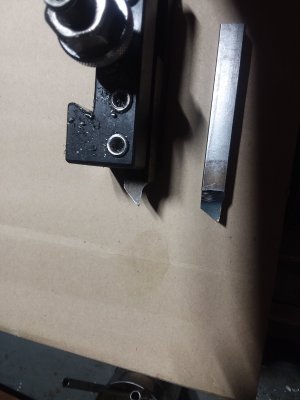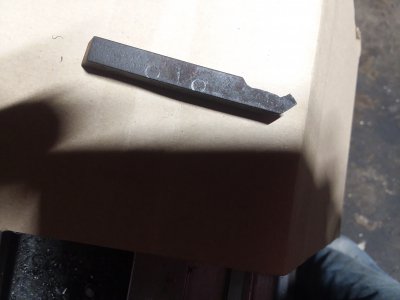There are two key differences between the Square tool, or general purpose tool, and the Knife tool. First, the Knife tool has lower back rake angles; this focuses the cutting forces just to the rear of the nose radius, which is exactly where you want a facing tool to cut. Second, end cutting edge angle of the Knife tool is intended to allow better access to shoulders, while the tiny nose radius minimizes the root radius of that shoulder. The knife tool is a specialized tool meant for fine work.
The side angle you referred to is called the Side Cutting Edge Angle. This angle, along with the End Cutting Edge Angle on the end, define the shape of the tool and determine the ability of the tool to access parts of the work piece. It can be altered to suit your needs, as I know you realize. What differs between the Knife and general purpose tools are the tool angles and where they focus the cutting forces. This may seem like a piddly small difference but it matters, at least to me. I use the Knife tool as a facing tool, shoulder work and almost all the trepanning work I do. It also chamfers pretty good, too. The Square tool is used for almost everything else. When the tool angles allow adequate access I use it for shoulder work, too, but the nose radius tends to be larger than on a Knife tool so when that root size matters, the Knife tool comes out.
Hope this helps.



